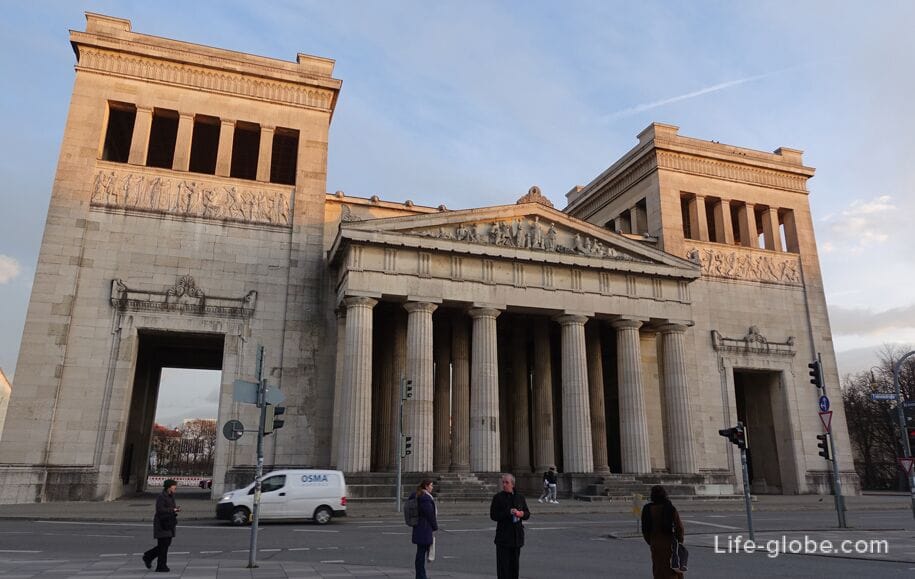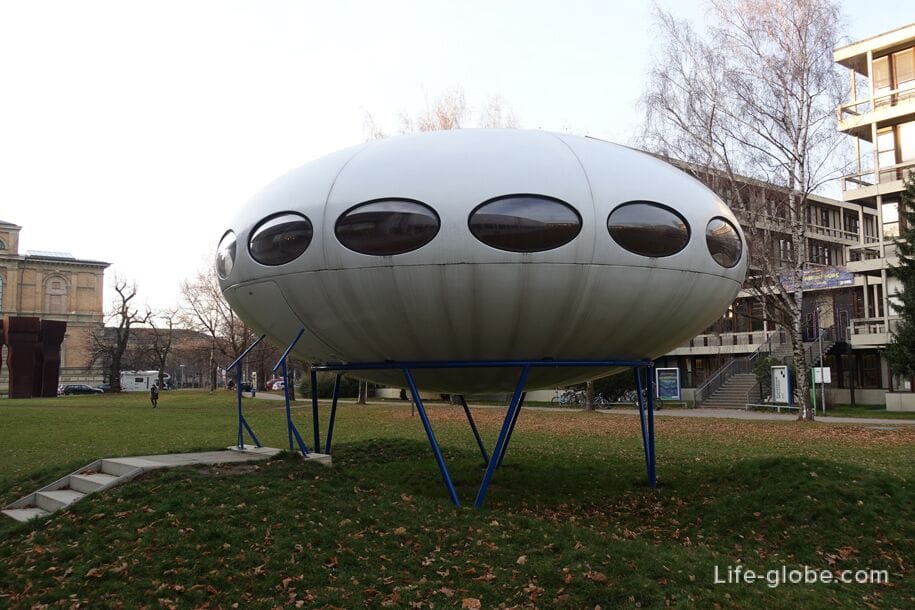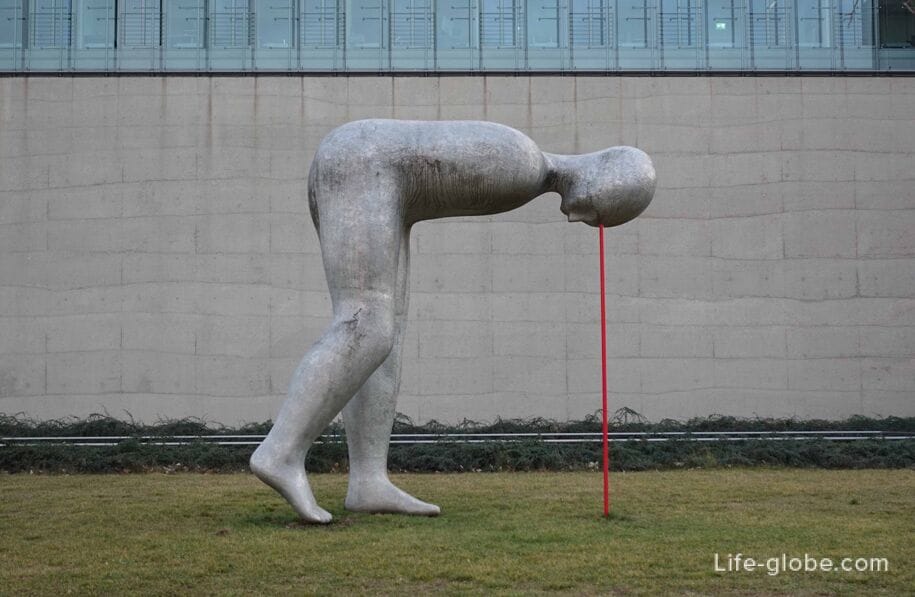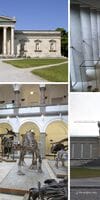Areal of art (Kunstareal München / Kunstareal) - art zone, - the museum quarter and cultural center of Munich, known outside the city (in Bavaria and Europe).
Previously, the Area of art in Munich was known as the museum district.
The Munich Area of art is located in city center, Maxvorstadt and represents the area in which are concentrated important museums and galleries of the city.
Also the Museum quarter is one of the most important fields of art in Europe, which combines historic architectural sites, squares, museums, sculptures, institutions, and modern buildings by internationally famous architects.
All the museums (objects) of the district are in walking distance from each other.
Museums and exhibition spaces of the art Area in Munich
Old Pinakothek
Old Pinakothek (Alte Pinakothek) art Museum with a collection of paintings by masters from the middle Ages to the mid-18th century.
History collection of the Old Pinakothek originated from the personal collections of the Wittelsbach dynasty, including that of Duke William IV and king Ludwig I.
Today the Alte Pinakothek shows European paintings from the 14th to the 18th century. More than 700 paintings from all over Europe are presented on two floors of the gallery - in 19 rooms and 47 offices.
Address of the Alte Pinakothek: barer Strasse 27 (Barer Strasse). The website of the Alte Pinakothek: alte-pinakothek museums. More about the Old Pinakothek...
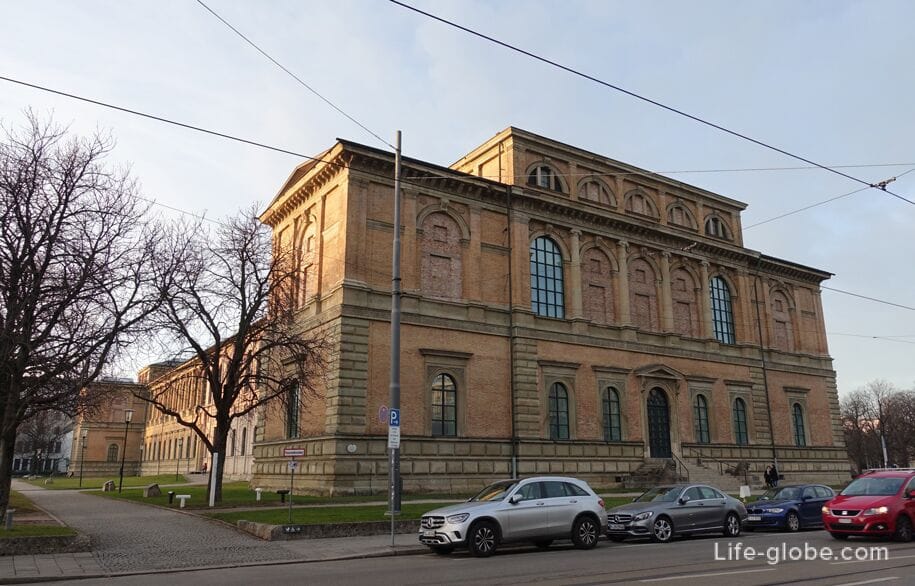
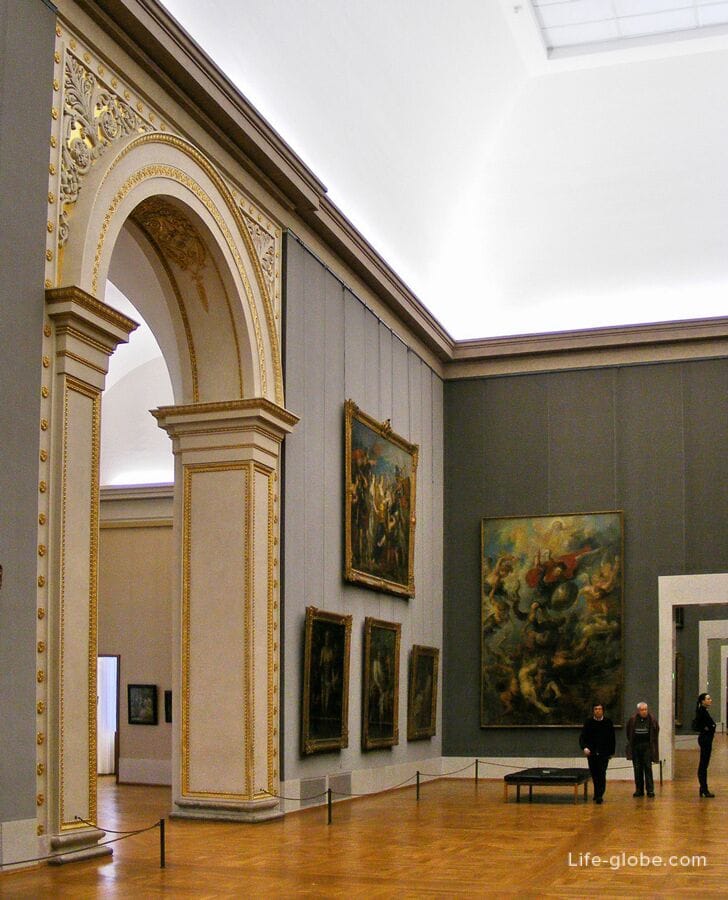
New Pinakothek
New Pinakothek (Neue Pinakothek) art Museum, which presents paintings and sculptures by artists of the second half of the 18th - early 20th centuries.
Munich was founded in 1853 by king Ludwig I of Bavaria, who wanted to make his private collection of contemporary works of art available to the public.
The focus of the Museum - European art of the 18th and 19th centuries and sculpture of the 19th and early 20th centuries.
The address of the New Pinakothek: barer Strasse 29 (Barer Strasse). New Pinakothek museums: the neue-pinakothek. Read more about New Pinakothek...
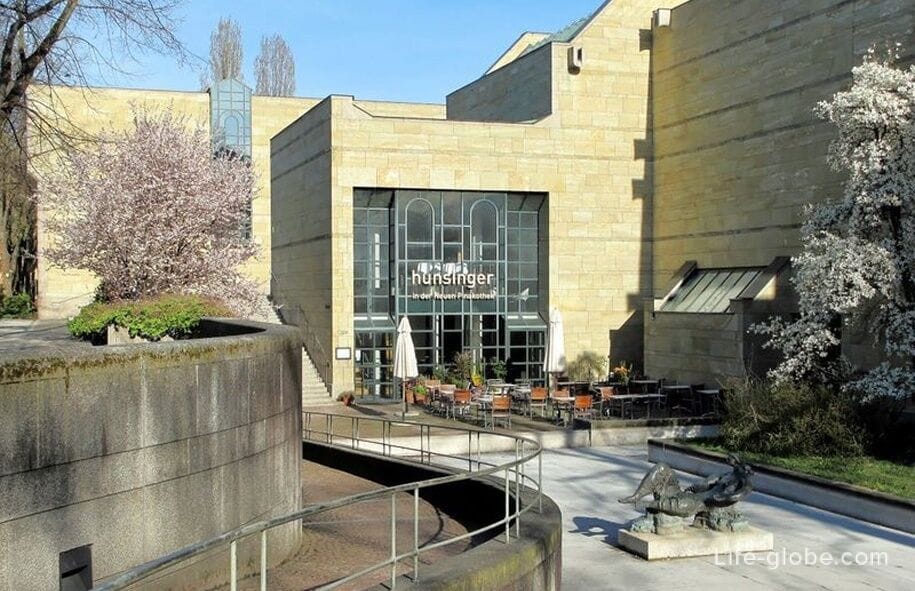
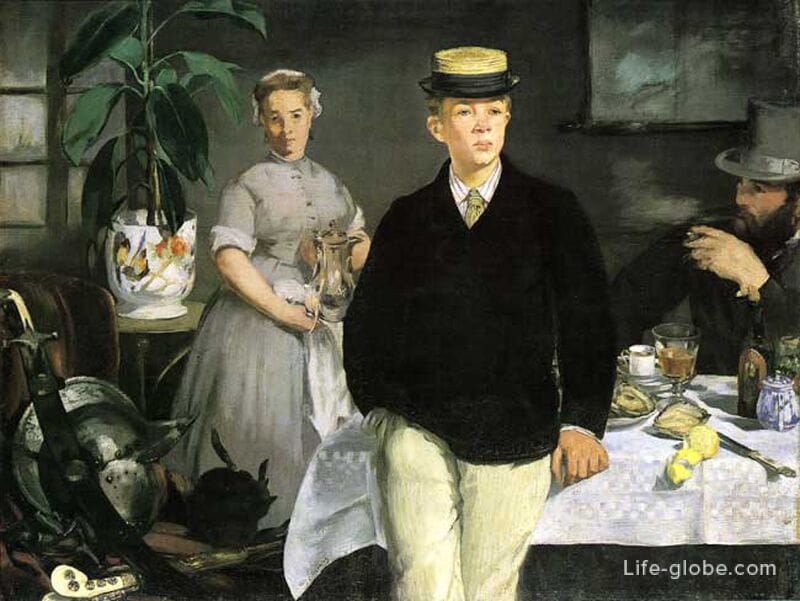
Pinakothek der Moderne
Pinakothek der Moderne (Pinakothek der Moderne) is one of the largest art museums of modern art, mainly 20th and 21st century.
Pinakothek der Moderne is a Museum building that brings together under one roof four independent Museumshowing its collection of different kinds of art:
- collection of contemporary art (Sammlung Moderne Kunst) contains works of the modernists, from about 1900 years; contemporary art from 1960-ies; and to the present day - video, photography and new media;
- new collection design (Die Neue Sammlung), in which there are more than 100,000 subjects, showing the history and development of design and applied art from 1900 to the present time;
- Museum of architecture technical University of Munich (Architekturmuseum der TUM), in whose collection includes paintings, drawings, photographs, models and computer animation, including the well-known architects and decorators;
- the state of graphic art (Staatliche Graphische Sammlung) represents the Bavarian state collection of works on paper and originates from the Wittelsbach collections, especially the collection of printing house of Charles Theodore to the present day.
Pinakothek der Moderne Address: barer Strasse, 40 (Barer Strasse). Website of the Pinakothek der Moderne: pinakothek-der-moderne. Read more about Pinakothek of modernity...
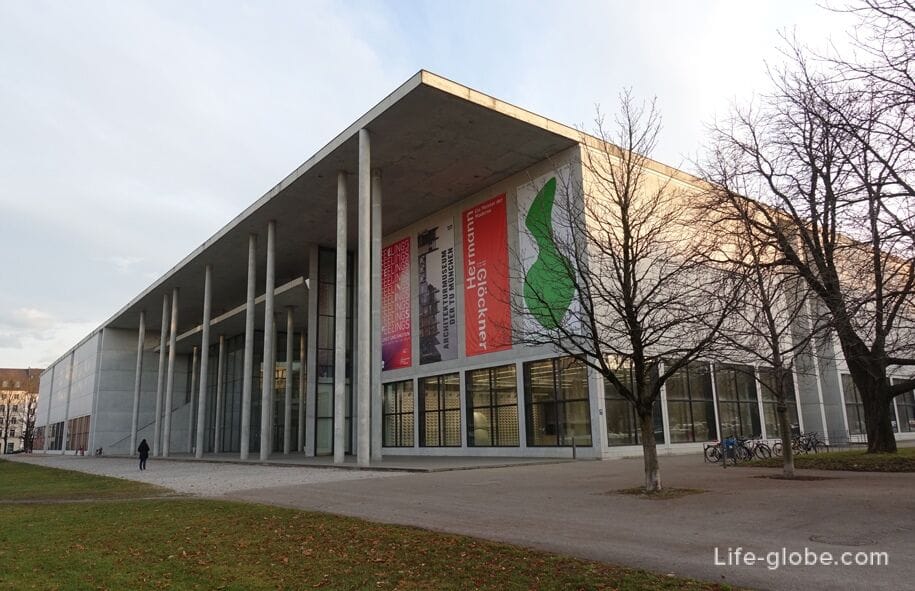
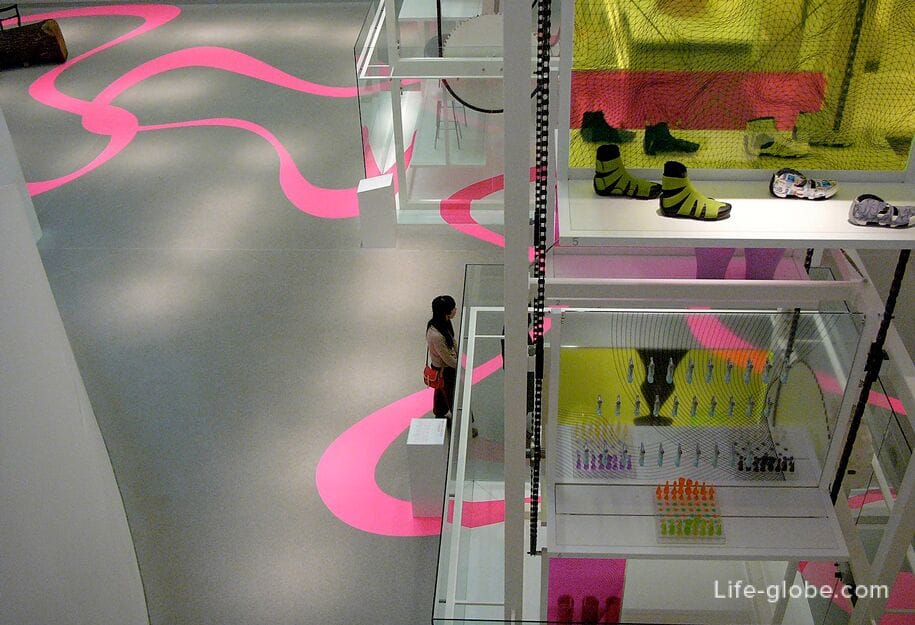
Museum Brandhorst
Museum Brandhorst (Brandhorst Museum) - art Museum dedicated to contemporary art since the late 1950-ies to the present day.
The Museum has a total of over 1,200 works by artists from different countries, of which 160 paintings can be seen in the exhibition halls of the Museum.
The main components of the Museum are Europe's largest collection of works by American artist Andy Warhol and most extensive in the world collection of works by American artist saya Twombly.
Address of the Deutsches Museum: theresienstraße underground station, 35A (Theresienstraße). The website of the Deutsches Museum: museum brandhorst. Read more about the Museum Brandhorst...

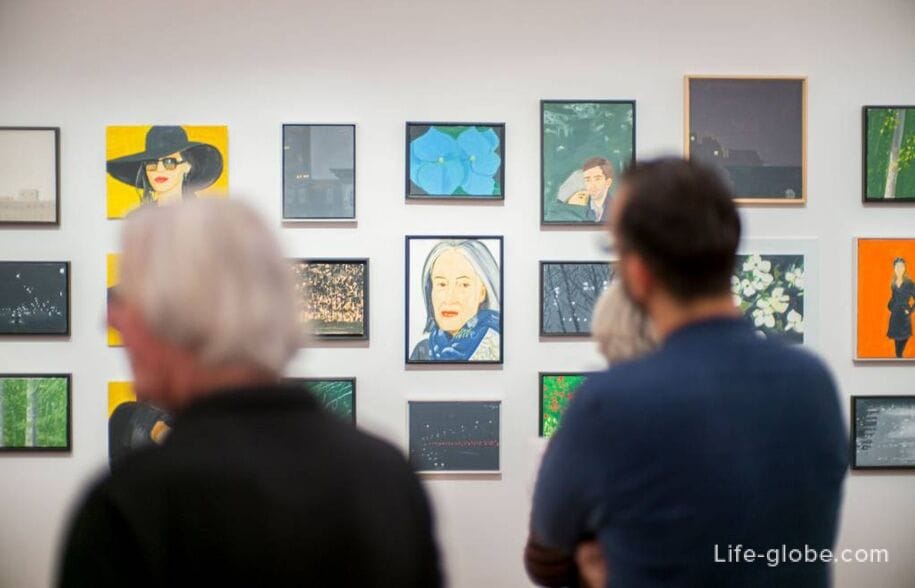
The Museum of Egyptian art
State Museum of Egyptian art (Staatliches Museum Ägyptischer Kunst) - the archaeological Museum, containing the Bavarian state collection, which focuses on the art of ancient Egypt.
The collection of the Museum come from private collections of the Bavarian Dukes and date back to the 16th century.
The Museum displays ancient Egyptian artifacts such as statues, sculptures, cult objects, papyri, stone tablets with hieroglyphics, glasswares, jewellery, amulets and sarcophagi, mummies, textiles and household utensils.
A small middle Eastern section of the Museum displays objects from the areas of Assyrian and Babylonian cultures.
The address of the Museum of Egyptian art: Gabelsbergerstrasse, 35 (Gabelsbergerstraße). The website of the Museum of Egyptian art: smaek. Read more about Museum of Egyptian art...
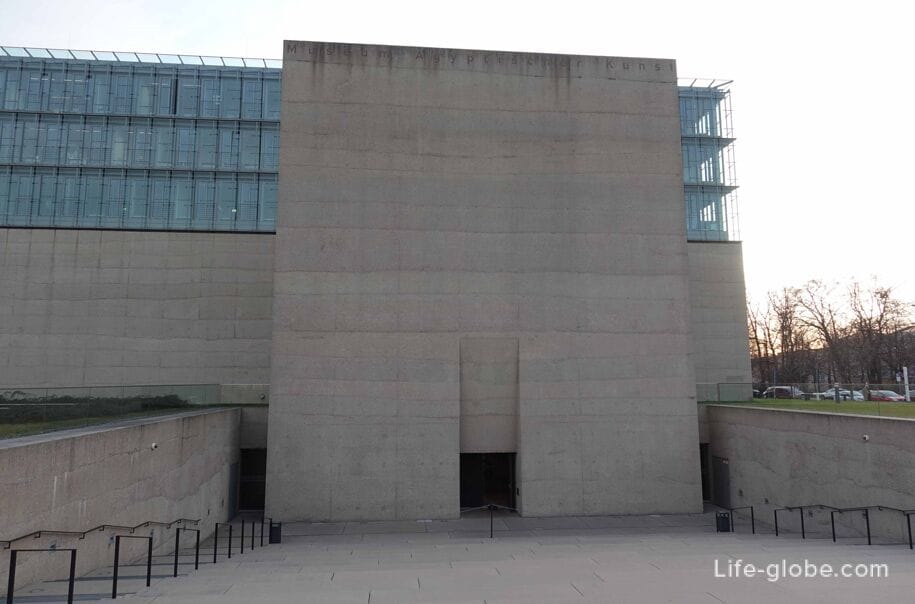

Glyptothek
Glyptotek Museum (Glyptothek) is a Museum with collection of ancient sculpture and glyptic.
The building of the Glyptothek is the oldest public Museum in Munich and the world's only Museum dedicated exclusively to ancient sculpture.
The collection of the Munich Glyptothek, includes works of art from four eras, from archaic period (circa 650 BC) to late Roman (circa 400 BC), namely, the collection, which includes masterpieces of archaic, classical, Hellenistic and Roman Imperial periods.
The Glyptothek address: Royal square, 3 (Königsplatz / Königsplatz). The website of Tradition: glyptothek-Munich. Read more about Glyptothek...
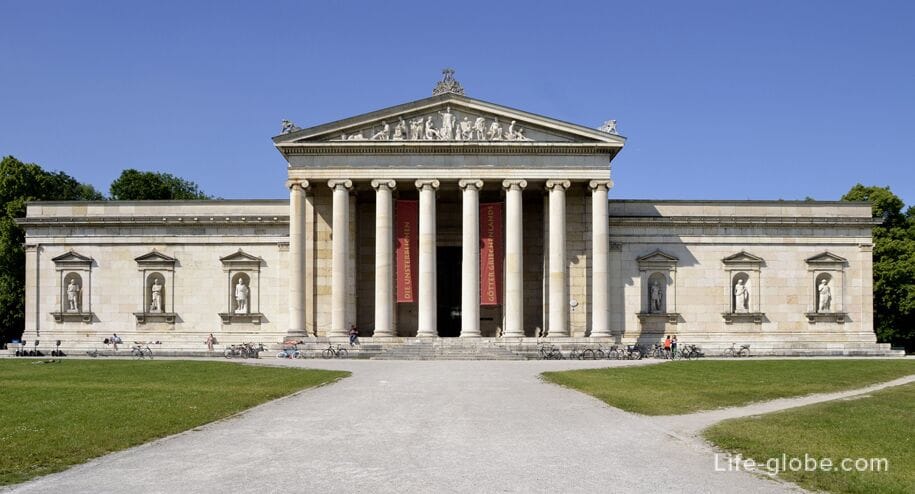
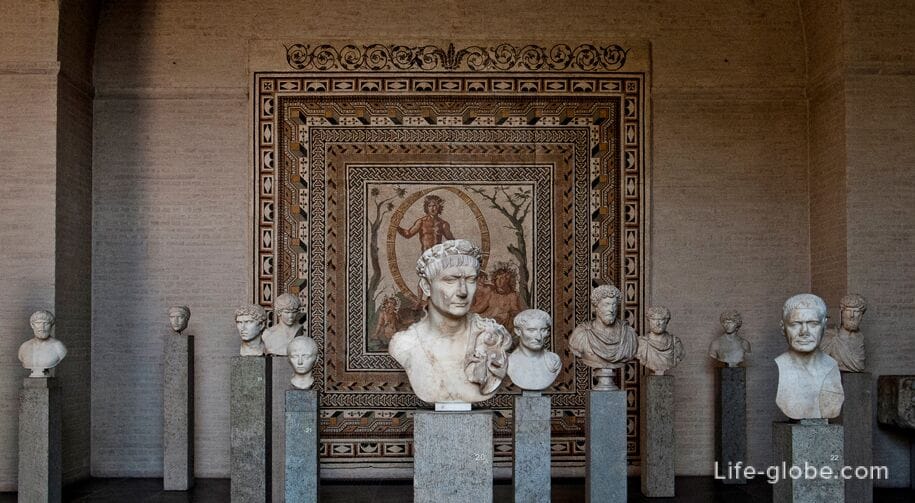
State antique collection
The state antique collection (Staatliche Antikensammlung), the Museum, which houses one of the most extensive collections of Greek antiquities, Etruscan and Roman art in Germany.
The Museum''s collection dates to the collection of antiquities of the dynasty of the Wittelsbacher, and, in particular, to the personal collection of king Ludwig I.
Museum collections date, including, items of BC, and are of Greek, Etruscan and Roman art and everyday objects - in particularportraits, ceramics, vases, bronzes, terracottas, glass, jewelry and precious stones.
The State collections of antiquities: the Royal square, 1 (Königsplatz). The State antique collection: staatliche-antiken-sammlungen-muenchen. Read more about State antique collection...
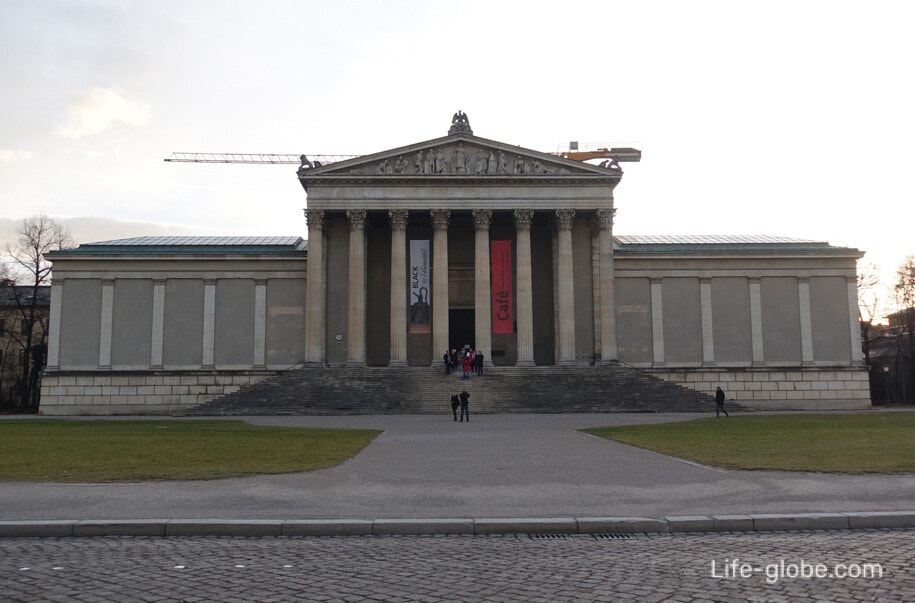

Municipal gallery in the Lenbachhaus
Municipal gallery in Lenbach house (Lenbachhaus Städtische Galerie im) - art Museum located in the former house-Villa of the German portrait painter Franz von Lenbach (1836-1904) was with a modern annexe.
The Museum''s collections contain a variety of the Munich artists, especially the 18th - 19th centuries.
Also, the Museum hosts temporary exhibitions of modern Bavarian and international artists.
The address of the gallery in the house Lenbach: Louisenstrasse, 33 (Luisenstraße). The website gallery in the Lenbachhaus: lenbachhaus. Read more about the gallery in the Lenbachhaus...

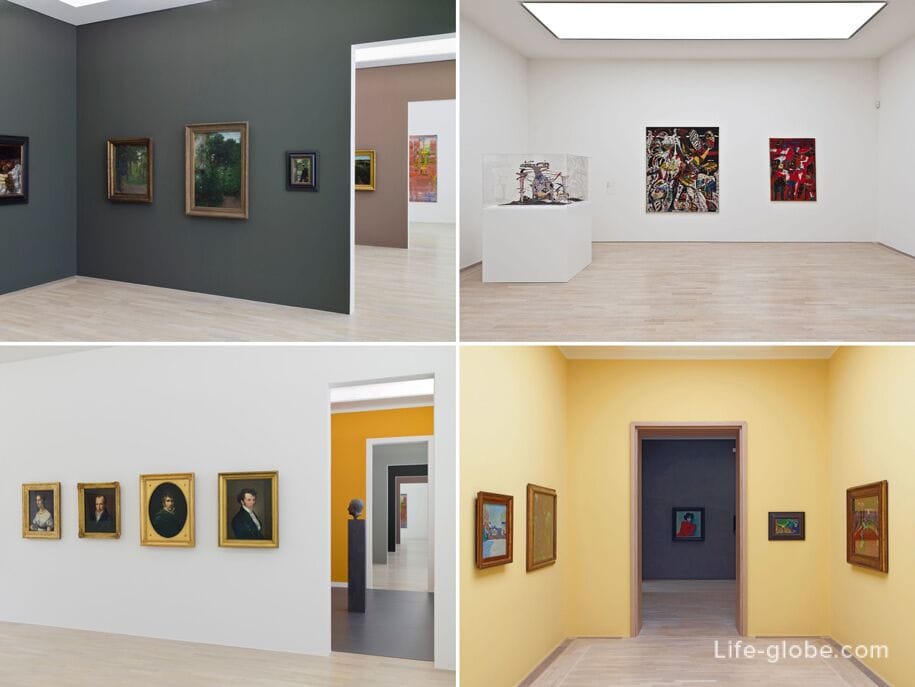
Paleontological and geological museums
Paleontological (Paläontologisches Museum) and geological (Geologisches Museum) museums belong to the Bavarian state collection of paleontology and Geology at the research University.
Exhibitions the geological Museum devoted to the rocky history of Bavaria, the geological processes and cycles that change earth's crust and raw material resources of our planet.
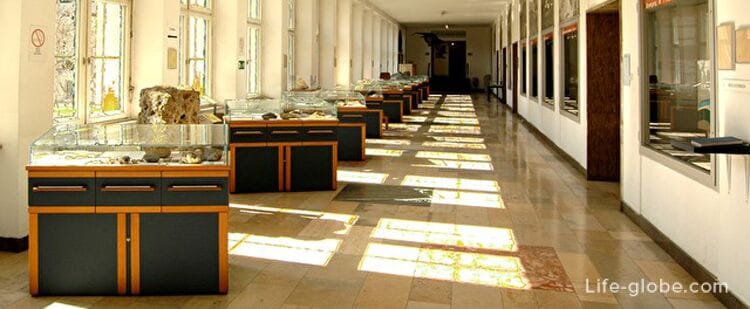
Exhibition of the paleontological Museum dedicated to the history of Earth and life, show fossils of animals and plants from all eras of earth's history.
In the small Museum contains the skeletons and other remains of extinct species of animals and plants, such as: the skeleton of a giant deer, saber-tooth tigers, prehistoric elephant "Gomphotherium von Gweng" and dinosaurs.
The palaeontological Museum is located in a historic building in the style of historicism, which dates back to the early 20th century, and was conceived as a school of arts and crafts.

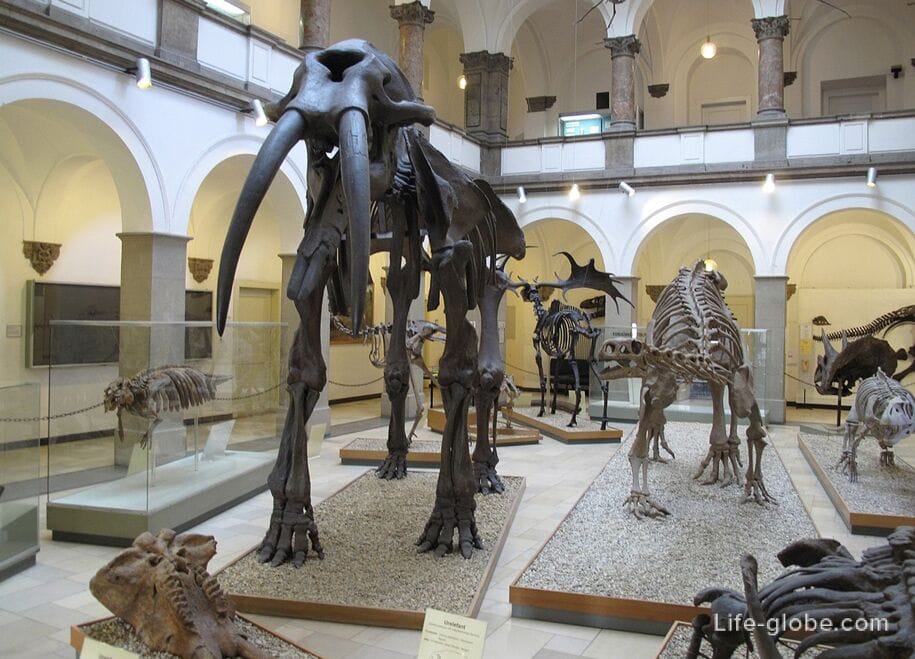
In addition to the permanent, the Museum also holds special temporary exhibitions on various topics.
Entrance to museums is free (free).
The paleontological Museum address: Richard-Wagner-straße 10 (Richard-Wagner-Strasse).
Address geological Museum: the Museum is located in the building of the Institute of General and applied Geology at the Ludwig Maximilian University address: Louisenstrasse, 37 (Luisenstrasse).
The museums website: palmuc.org.
Documentation centre Nazi party
Documentation centre Nazi party or Nazi documentation centre (NS-Dokumentationszentrum) focuses on the history and consequences of the Nazi regime and the role of Munich as the "capital of the movement" national socialism.
Today's centre was built in a historically important place - the place where was the former "Brown house" (Braunes Haus / was Brounes house), which was purchased in the 1930s for the Nazis and structured in the headquarters of the National socialist German workers ' party.
The center has exhibition space, a concept which focuses on the dissemination of knowledge about the time of national socialism and the questions: "Why Munich? And what does this have to us today?"
At the center also hold changing exhibitions, a library, lecture halls and a room for film screenings.
The entrance is free (free). The entrance fee may apply to special temporary exhibitions.
Address: Max-Mannheimer-Platz 1 (Max-Mannheimer-Platz). Site: ns-dokuzentrum-muenchen.
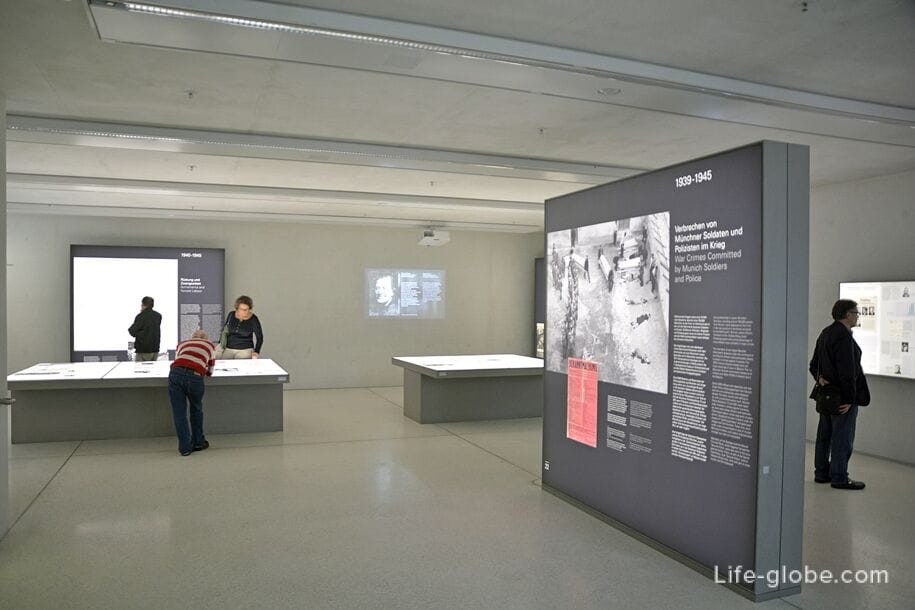
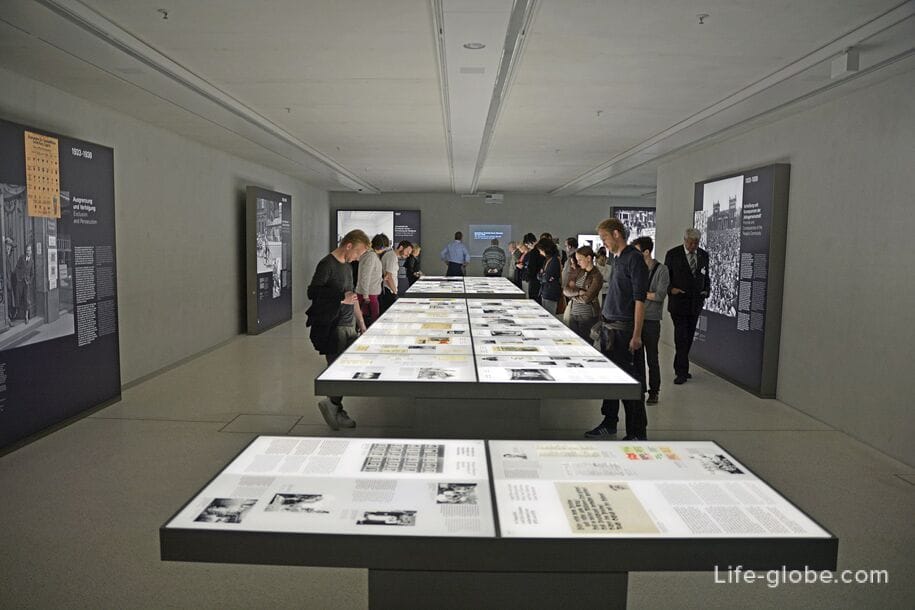
Museum of casts of classical images
The Museum of plaster casts of classic images, can be known as the Museum of copies of ancient sculptures (Museum für Klassischer Bildwerke Abgüsse) - gallery with a collection of plaster copies (casts) of the famous ancient Greek and Roman sculptures (statues and busts from 700 BC to 500 BC), which was reproduced in accordance with the originals.
In total, the Museum houses approximately 2,000 plaster casts, making it the fourth largest collection of casts in Germany.
The Museum was founded in 1869 by Henry Brannam in the framework of the creation of the Department of classical archaeology at Munich University. Since 1976, the Museum is Home to cultural institutions.
The world famous marble and bronze masterpieces are scattered all the main museums, but here they are United under one roof in the form of plaster casts. The main attraction of the Museum is a colour plaster model of the Parthenon in Athens in 1:20 scale.
Entrance to the Museum is free (free). The entrance fee may apply to temporary exhibitions.
The address of the Museum of casts: Katharina-von-Bora-straße 10 (Katharina-von-Bora-Straße). The website of the Museum of casts: abgussmuseum.
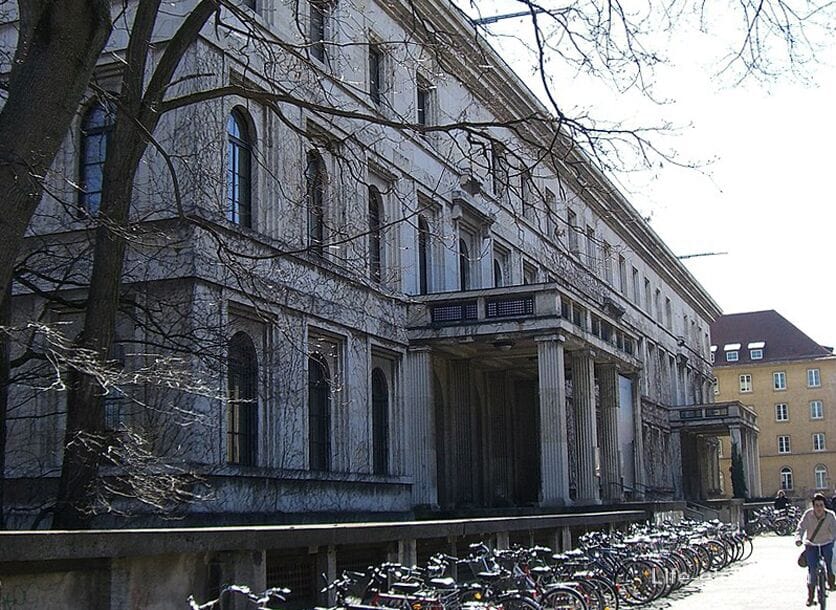

The Museum "Kingdom of crystals"
The Museum "Kingdom of crystals" (Museum Reich der Kristalle) is the collection of minerals and fossils, and is part of the mineralogical State collection Munich (Mineralogischen Staatssammlung).
The Museum collection includes 100,000 pieces, of which the Museum room displays about 20,000 specimens, including diamonds, emeralds and other precious stones and minerals. There are also collections of meteorites, quartz from Alpine and Bavarian minerals from ore deposits.
The main exhibits of the Museum are: 289-pound iron meteorite from Namibia, which you can touch; diamond king Ludwig; the emerald Leichtenberg.
In addition to the permanent public exhibition, the Museum also has special exhibition hall, which in winter have big special exhibitions, while in the summer expose the raw and cut precious stones, precious metals (platinum, gold, silver) and meteorites.
The address of the Museum of crystals: theresienstraße underground station, 41 (Theresienstraße). The website of the Museum of crystals: mineralogische-staatssammlung.
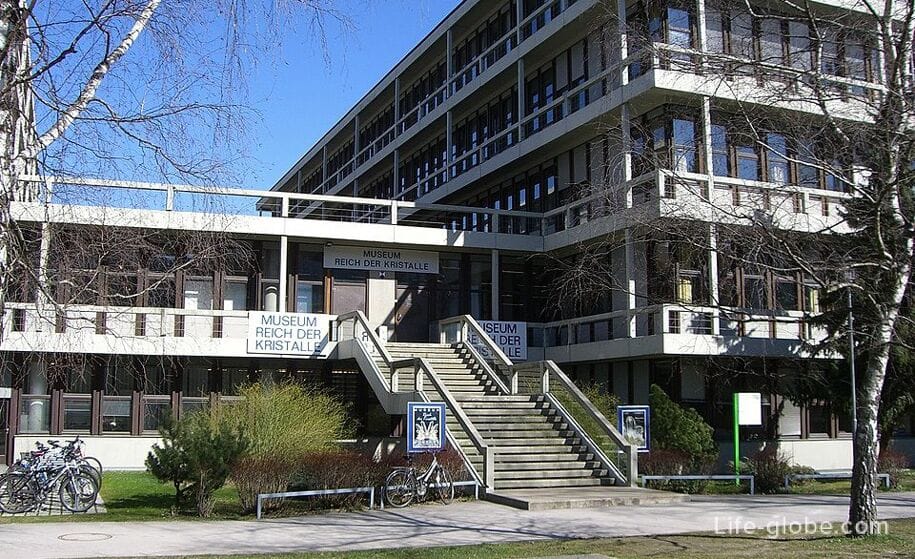
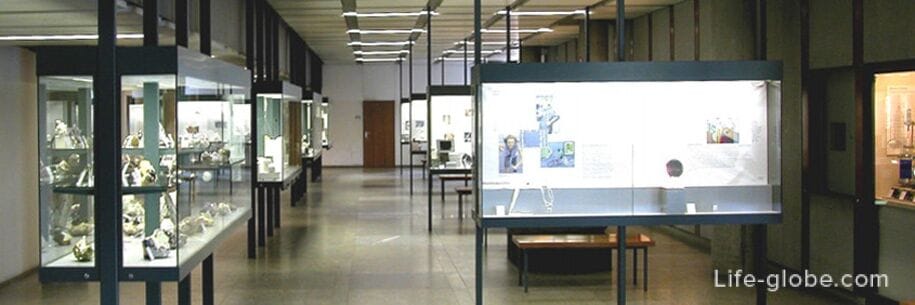
Turkish gate
Turkish gate (Türkentor / Tormentor) is the only remaining small part (door gate) from the former Turkish barracks in Munich, built in 1826 for the Royal Bavarian infantry lifeguards regiment.
In the period from 2008 to 2010, Tarkenton was revived under a modern building given its historical significance and re-opened in October 2010.
The room is the sculpture "Large Red Sphere" (Large Red Sphere), by the American artist Walter De Maria (Walter De Maria). The sculpture was acquired by the Deutsches Museum. It weighs 25 tons, is made of red granite and has a diameter of almost three meters.
Visit gates - free. Opening hours: daily (except Mondays), from April to October from 11:00 to 17:00 hours from November to March from 12:00 to 15:00 hours.
Gate Address: Turkenstrasse, 17 (Türkenstraße).
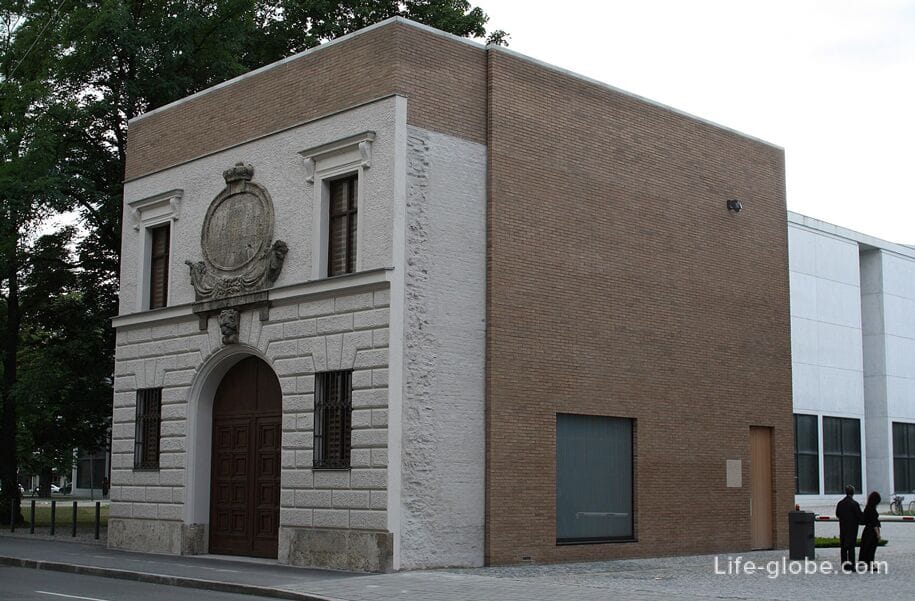

In addition to the above, within the Area of art of Munich is also located other cultural institutions and objects, including: sculpture; the Church; the Propylaea; universities; art pavilion in the old Botanical garden (Kunstpavillon im Alten Botanischen Garten; gallery architecture (Architekturgalerie Munich), which is the exhibition area, etc.
Site Area of art in Munich: kunstareal.
